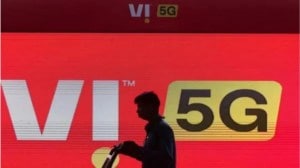Moody’s frowns on India’s fiscal efforts
Moody's expects India's GDP to expand at around 7.5-8%,and sees inflation at 7%.
India’s fiscal consolidation efforts have been incremental,rather than bold,and reducing the government’s expenditure is vital for consolidation,Moody’s Investors Service said in its annual credit analysis note.
Although revenue buoyancy has helped reduce government deficits during upswings in the business cycle,there has been little improvement in the structure of government expenditures and the tax net has widened only incrementally,the credit rating agency said in the note released late last week.
Since there would be difficulties in expanding the tax net significantly in the near term,expenditure reduction would be the logical choice for fiscal consolidation,Moody’s noted.
However,the likelihood that overall expenditure will be reduced in the near term is also low.
Most analysts and Moody’s expect India to overshoot its 2011/12 fiscal deficit target of 4.6 percent of the gross domestic product,or 4.13 trillion rupees ($90 billion),even though the government had repeatedly stated that it was keen to achieve the same.
The government’s debt is made more sustainable by the statutory restrictions and the generally positive outlook for private savings growth,the note said.
High annual deficits and a significant interest burden limit government spending on the much needed social and physical infrastructure and hamper fiscal flexibility to respond to future shocks,it added.
GROWTH PROSPECTS
Moody’s expects India’s GDP to expand at around 7.5 to 8 percent in 2011/12,and sees inflation abating gradually over the course of the year to about 7 percent.
Given the current global uncertainty,and the continuing transmission of the RBI’s (Reserve Bank of India’s) tightening over the last year,the risks to both forecasts are on the downside,the note said.
However,the 2011/12 GDP growth rate in the 7 percent range would not change our assessment of the country’s sovereign credit outlook.
Data on Friday showed U.S. employment growth ground to a halt in August,while the European debt crisis continued to fester with Greece and its international lenders now at odds over whether it has met conditions for a new aid tranche.
Moody’s said should the global growth decelerate,the concurrent decline in global commodity prices would alleviate India’s inflation and likely allow for a pause or even reversal in monetary tightening.
The RBI has been among the most aggressive central banks in the world,having raised rates 11 times since March 2010,with another increase expected at its policy review on Sept. 16.
Although inflation eased in July,the still-high headline number and persistent price pressures in manufactured goods have raised the odds that policy will have to stay tight in the economy despite the rising risks to growth.
India is not immune to growth signals from abroad. (But) it is not dependent on external impulses for domestic growth,and the diversity of the domestic economy provides a further buffer against a slowdown in particular globally exposed sectors. ($1 45.9 rupees)



- 01
- 02
- 03
- 04
- 05




























